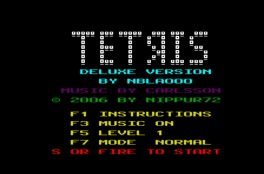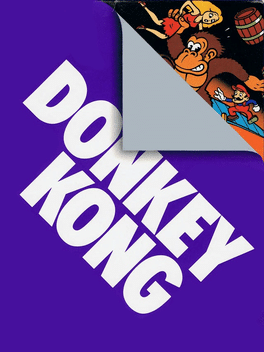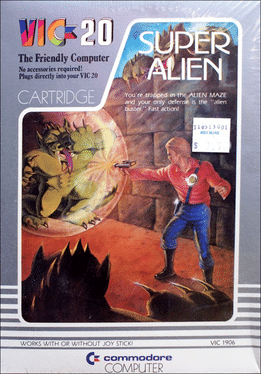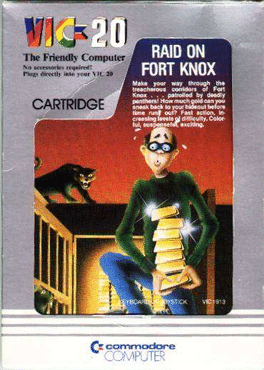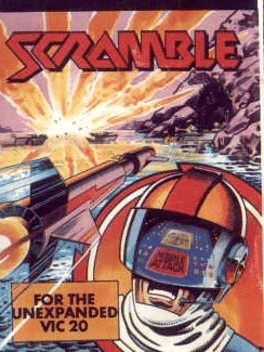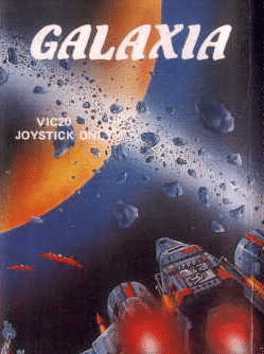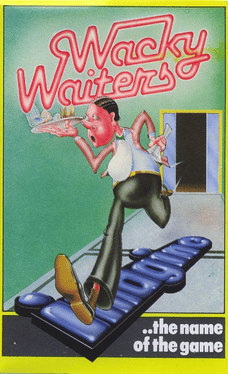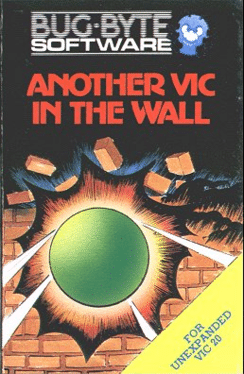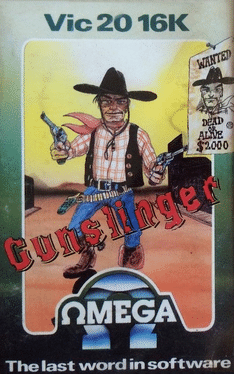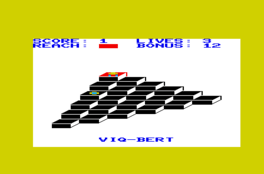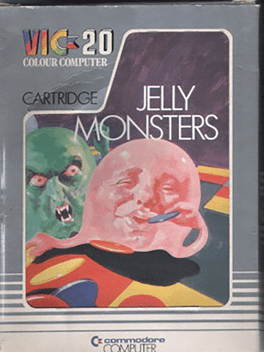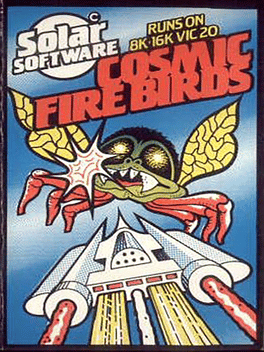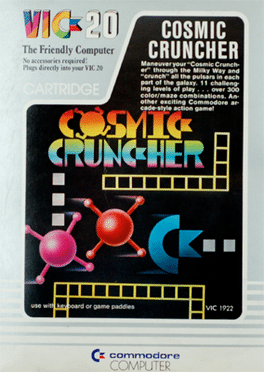Most Popular Commodore Vic 20 Games - Page 3
-
Tetris Deluxe
2006
-
Donkey Kong
1983
Donkey Kong
1983
The Commodore VIC-20 port of Donkey Kong was developed by Atari, Inc., under the Atarisoft label. -
Super Alien
1982
Super Alien
1982
Super Alien is a single-screen action game. The player moves through the maze and can place traps on the floor. When a monster walks into it, it becomes trapped and the player can kill it by filling in the hole. Each defeated monster rewards points while touching them results in a life loss. The maze is shown from the usual top-down perspective, but the characters have a side-view. -
Raid on Fort Knox
1981
Raid on Fort Knox
1981
The objective of the game is to steal gold bars from the vaults of Fort Knox and escape back to their hiding place with them. Fort Knox is represented as a labyrinth of hallways and for some reason there are patrolling black panthers that should be avoided. -
VIC Scramble
1982
VIC Scramble
1982
VIC Scramble is another Scramble game for the VIC-20, but with some alterations that make it stand out. As usual, you fly with a ship through a system of caves, but this cave lacks the usual roof. You shoot or drop bombs at the usual missiles, saucers and fuel pods, but in this version, you don't shoot and bomb simultaneously. Bombs are released by pulling back on the joystick with the fire button pressed. Of course, this means that you can't go back and forth as usual, instead your ship is glued to the back of the screen. While the scrolling is forced, pushing forward makes it speed up, so that you can fly away from missiles and other threats. As you go deeper into the caves, the border colour changes. -
Galaxia
1983
-
Wacky Waiters
1983
Wacky Waiters
1983
Using the elevators and platforms in each level you have to serve your customers on the other side of the screen. -
Another Vic in the Wall
1982
Another VIC in the Wall is a simple Breakout variant. The player uses a paddle at the bottom of the screen to reflect a ball that bounces around the screen. The screen is constantly being filled with bricks and the idea is to destroy these by hitting them with the ball. If the ball goes past the paddle the player loses a life. He has three lives in total. The goal is simply to get as many points as possible. There is no end to it as new bricks are continuously added to the screen. The game is written in machine code and can be played with either keyboard or joystick. -
ViColumn
2005
ViColumn
2005
ViColumn is, as one might guess, a re-implementation of SEGA's Columns for the VIC-20, released in 2005. Blocks of three vertically arranged colours, out of a pallette of four, come dropping down from above, and must be placed on the bottom or on top of another block. By pressing fire, you can rotate the colours inside the block so as to fit in with the colours of other blocks already placed on the screen. If three or more adjacent blocks have the same colour on a row or column, that colour block is eliminated, making room for more blocks. Carefully laying down the blocks can lead to chain reactions. Unlike the original Columns, though, this implementation does not recognise diagonal colour combinations. -
VIQ-Bert
2002
VIQ-Bert
2002
IQ-Bert is perhaps not the first, or even the best variation on Q*Bert for the VIC-20, but it is by far the smallest, weighing in at under a single kilobyte (programmed for the 2002 edition of the MiniGame Compo coding contest). As in the original Q*Bert, the player moves on a 3D pyramid, coloring the fields of the pyramid as he/she/it moves. Coloring all tiles clears the level. This would be easy were it not for the enemies moving around in haphazard patterns on the same pyramid. Unlike the original Q*Bert enemies, they don't change back the color of the game tiles, but contact is deadly. Another way to die is to fall off the pyramid. Later levels require coloring the same squares multiple times, and even later, you cannot pass the same square twice without changing the color back, so a strategy element is introduced. -
The Perils of Willy
1984
-
Jelly Monsters
1981
Jelly Monsters
1981
Jelly Monsters was originally developed as a port of Pac-Man by HAL Laboratory for Commodore Japan, who held the home computer rights for Pac-Man in Japan at the time. When Commodore released it internationally the title was changed to Jelly Monsters, since Atari held the home computer rights for North America. Commodore’s Jelly Monsters was released in 1981, a year before Atari would release Pac-Man for the 2600. Atari quickly sued Commodore to have the title removed from shelves and won. -
Cosmic Fire Birds
1983
Cosmic Fire Birds
1983
A single screen shoot'em up written by John P. Shay and published by Solar Software for the Commodore VIC-20. -
Cosmic Cruncher
1982
-
Chariot Race
1983
-
Abductor
1982
Abductor
1982
Abductor is a side view single screen shooter where you control a spacecraft at the bottom of the screen, moving left or right, and you have to blast and destroy all aliens that appear in various formations above. Below your craft are six humans and you must stop them being taken by swooping aliens to the top of the screen and if they reach the top, they turn into skulls and fall down the screen. If you are hit by an alien or falling skull then you lose one of three lives but if you lose all the humans then it is game over. -
Cosmiads
1983
-
Dark Dungeons
1983
Dark Dungeons
1983
Enter the fantasy world populated by ferocious monsters, fire breathing DRAGON and a cunning DWARF. Find the magic scroll and solve the riddle that will unlock the passageway to the CATACOMBS. You can choose to be a fighter or magician, choose your attributes of strength, wisdom, intelligence, constitution and charisma but do so wisely. As you enter the dungeons you may purchase equipment to assist - buy with care.
